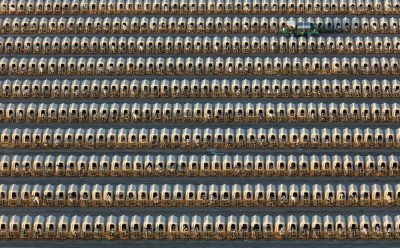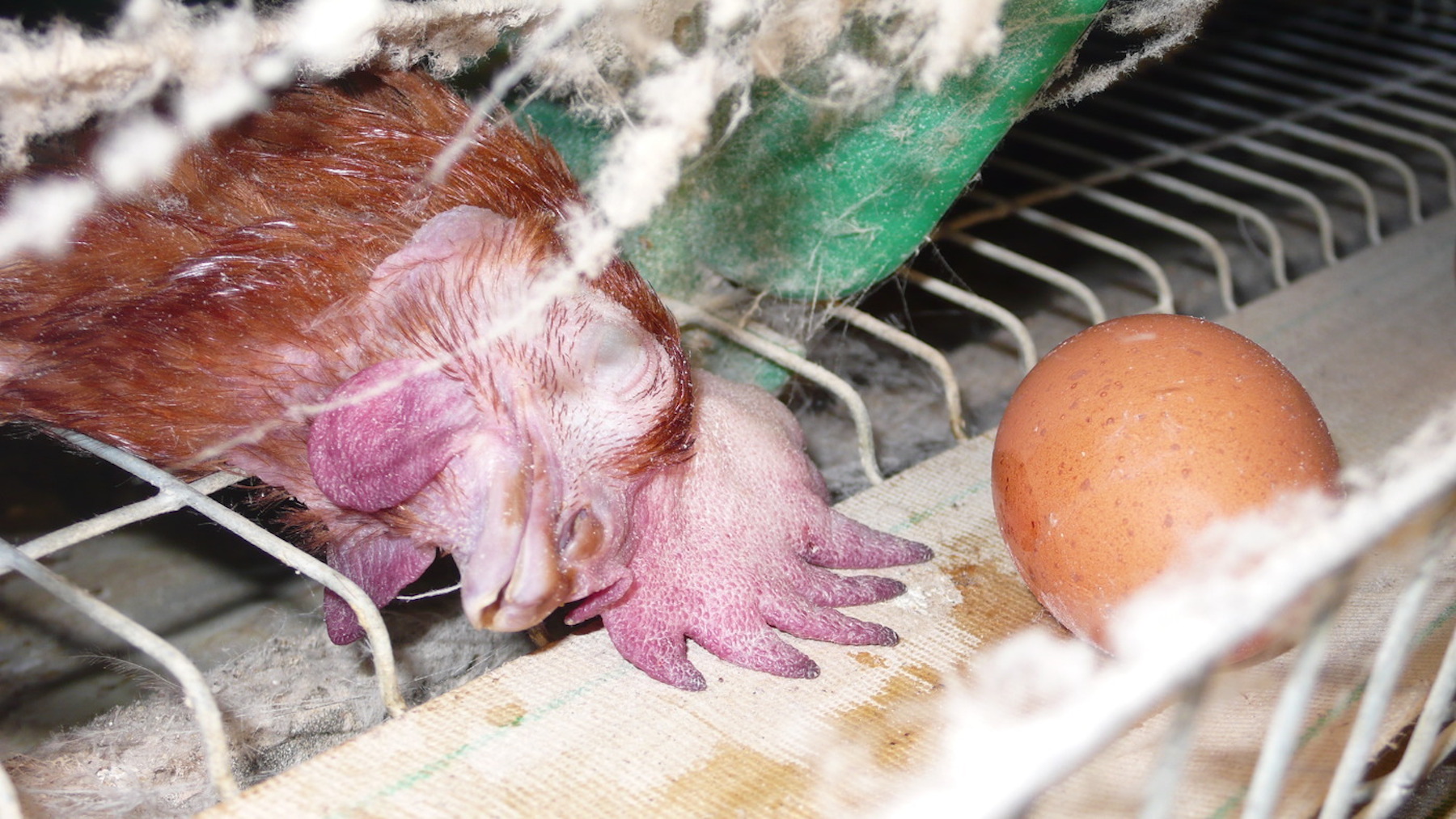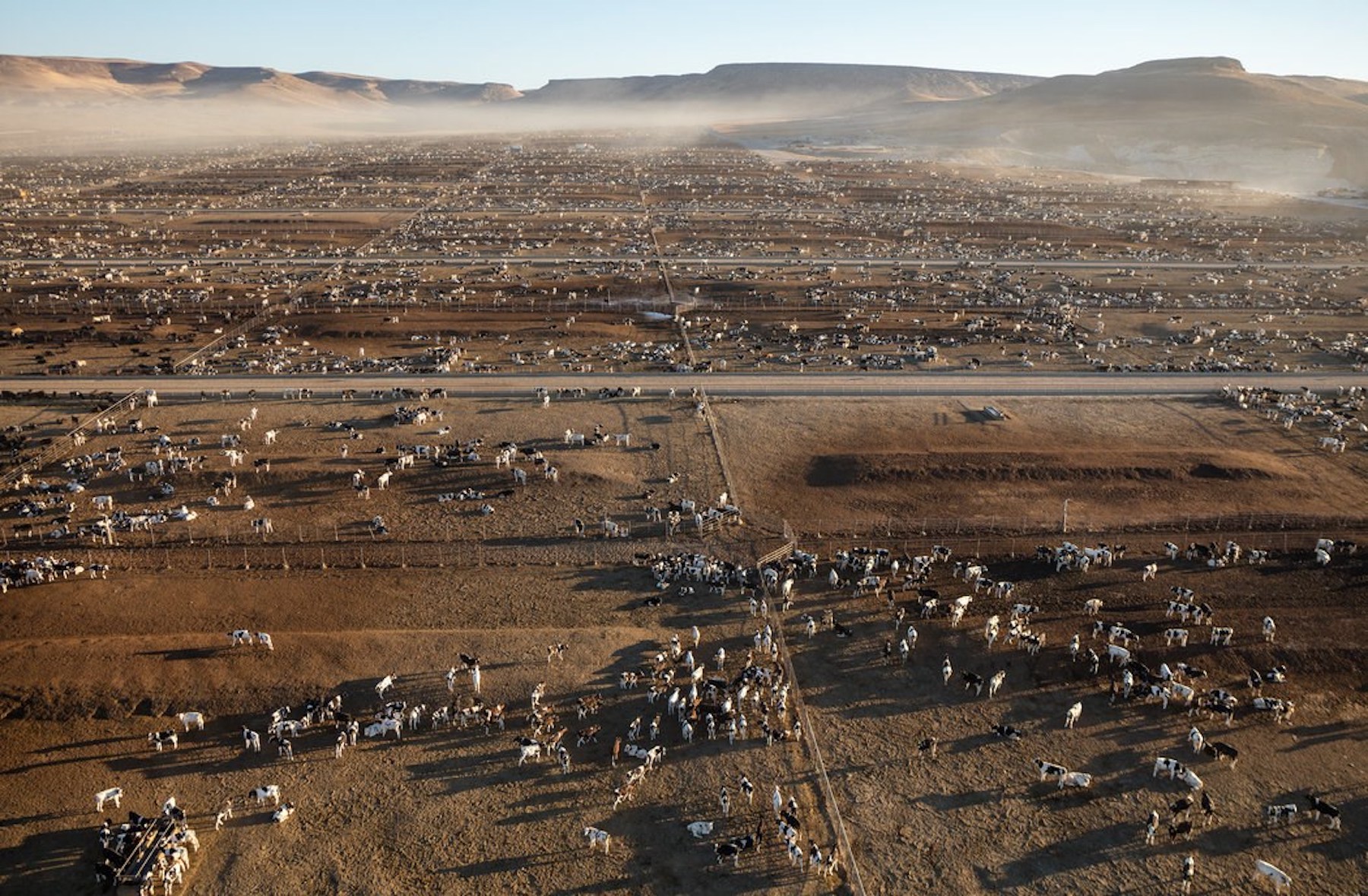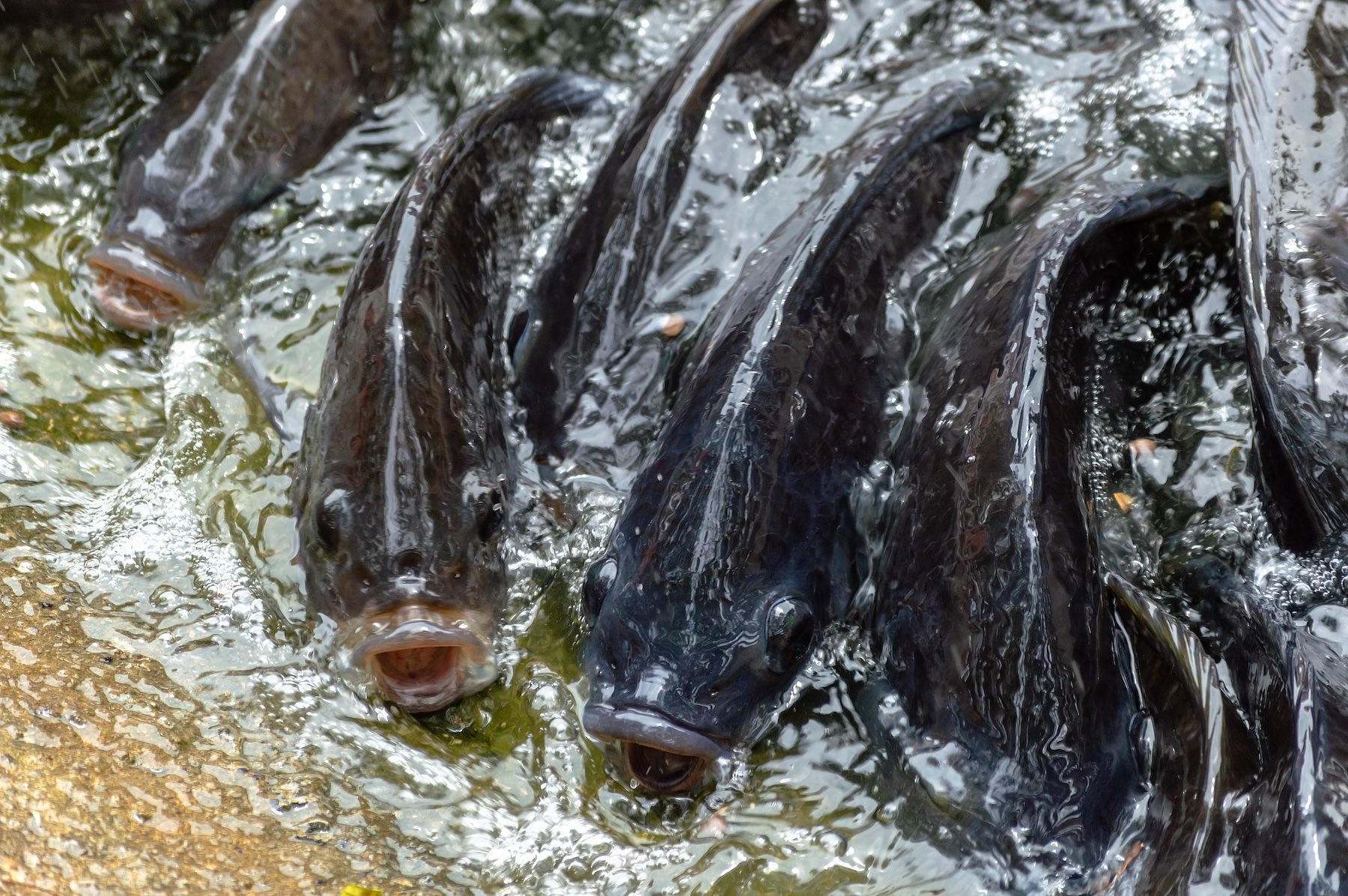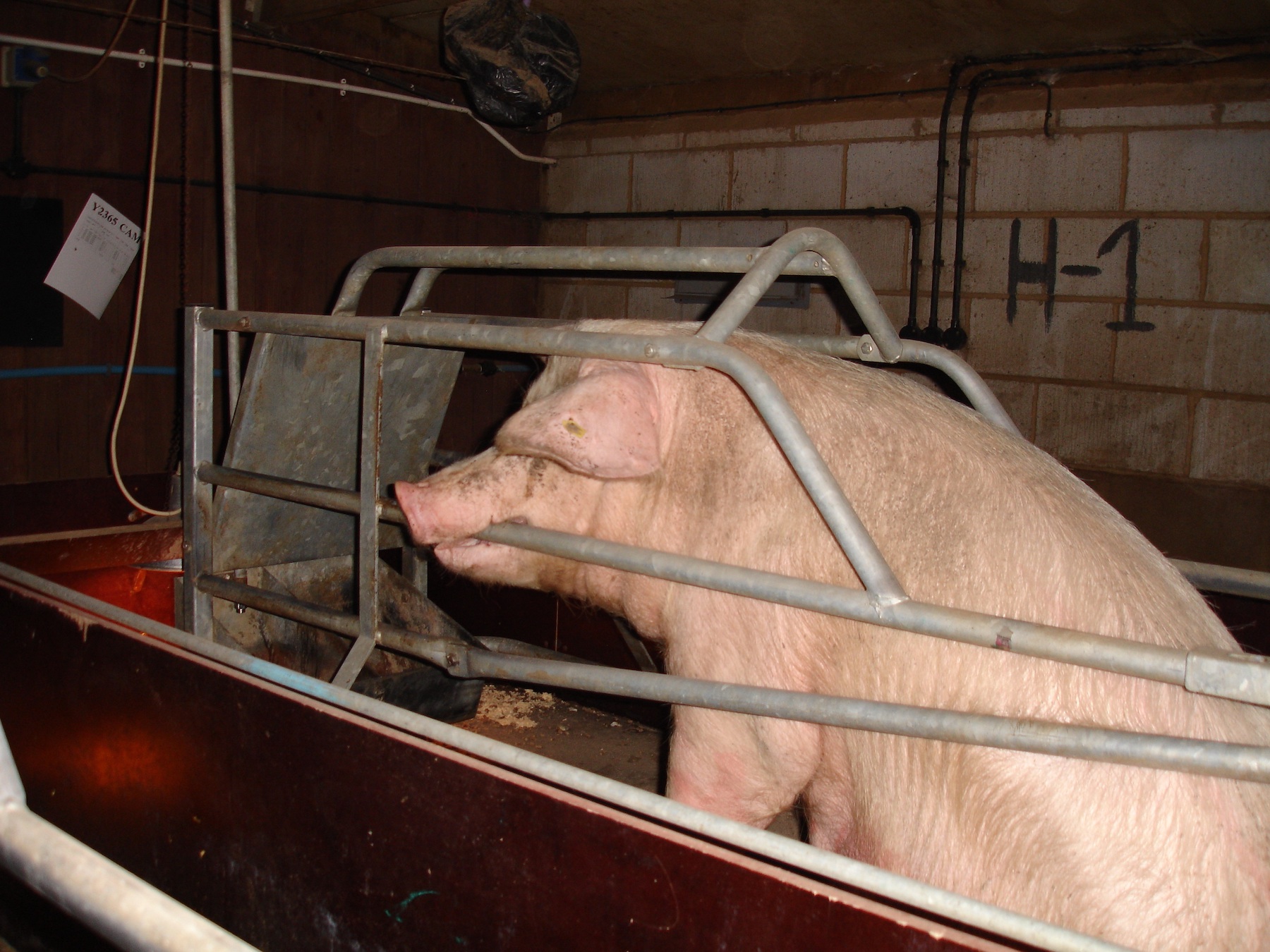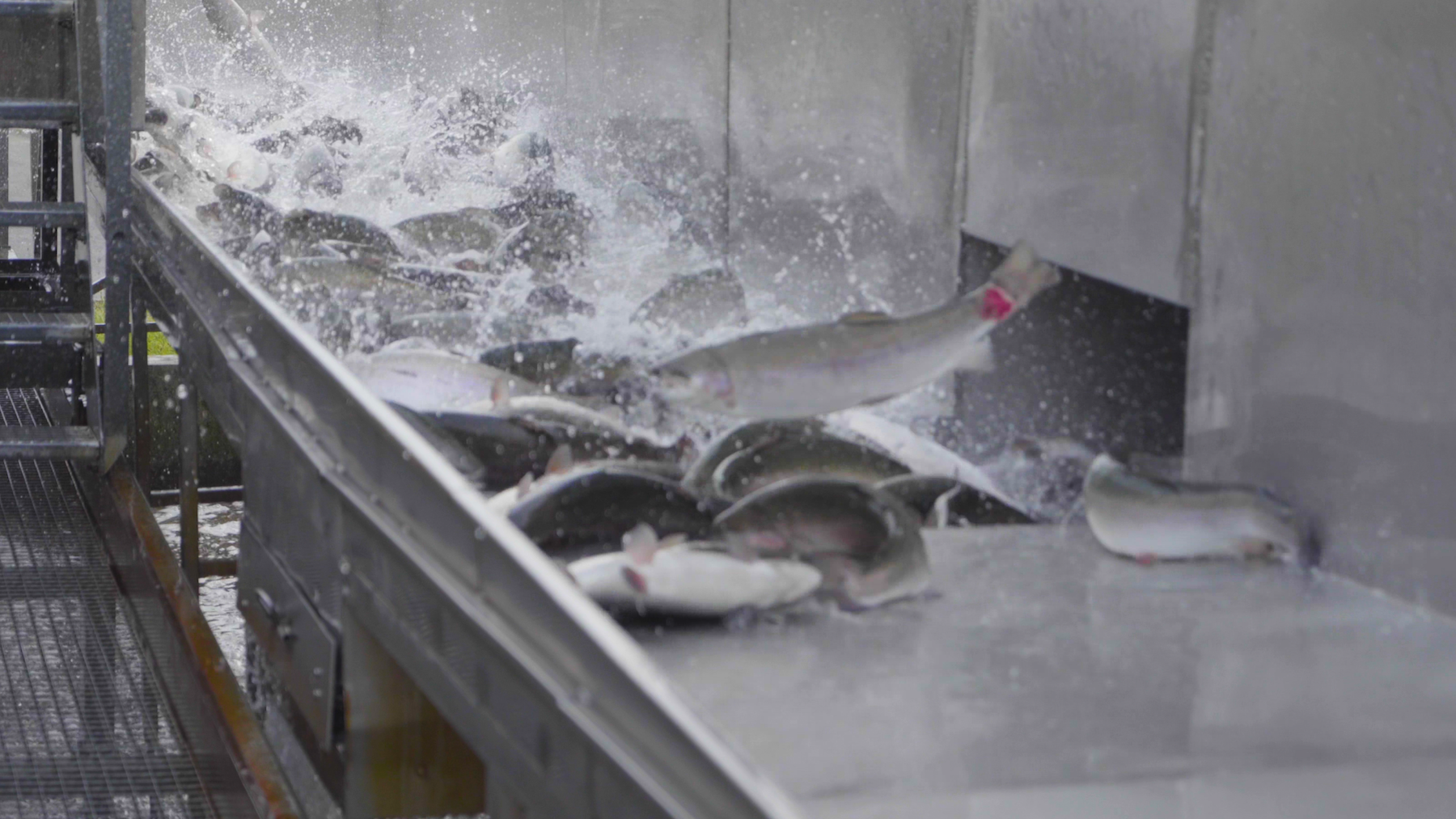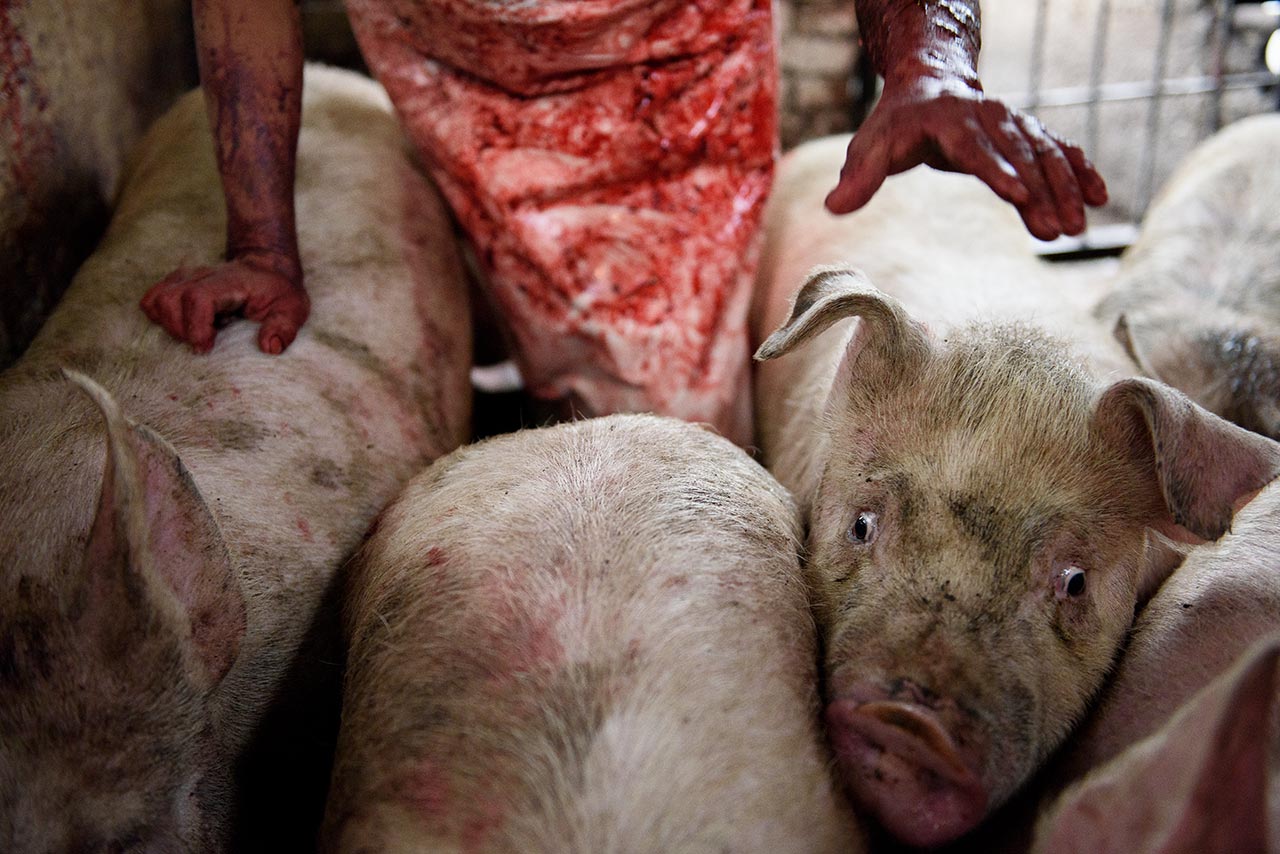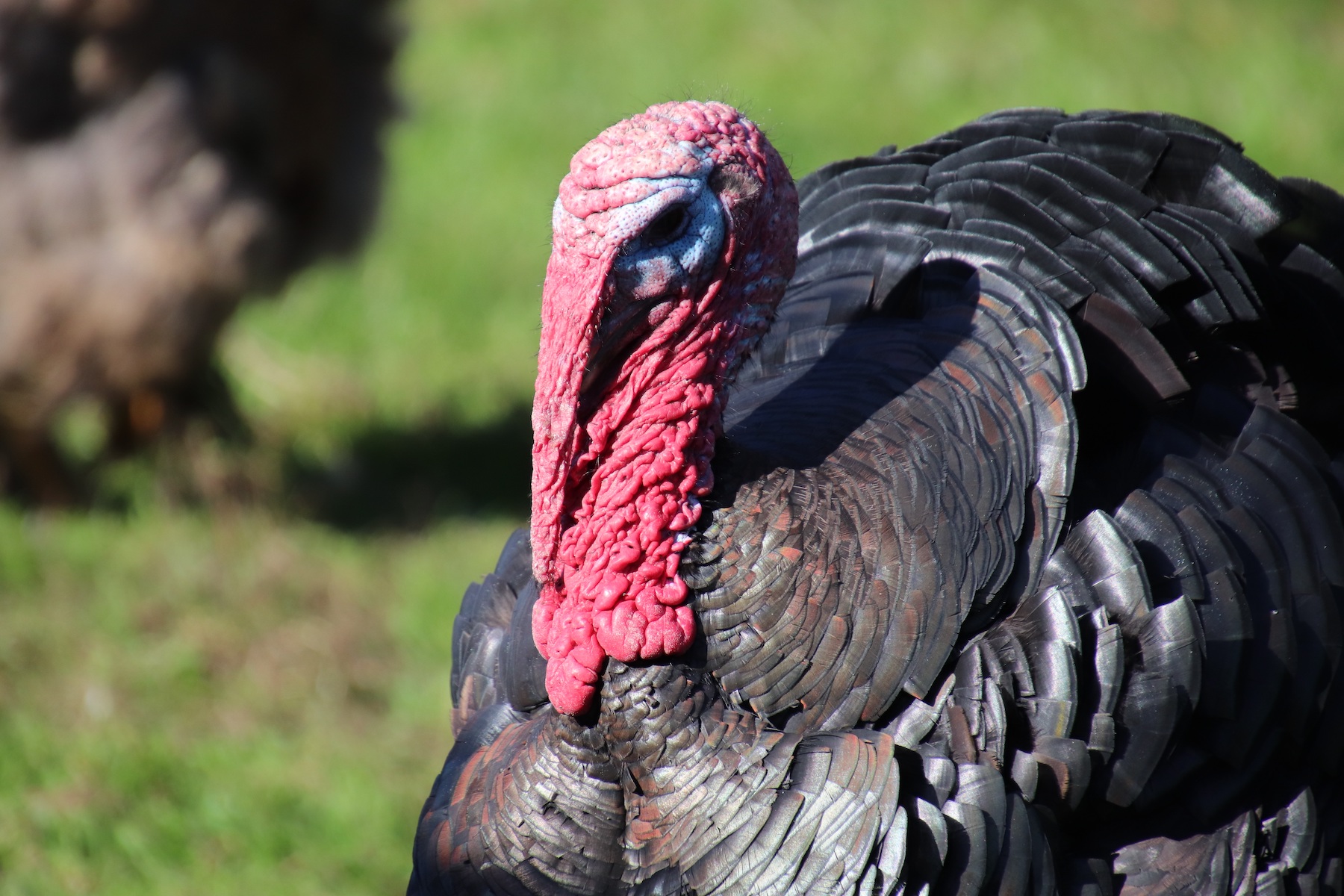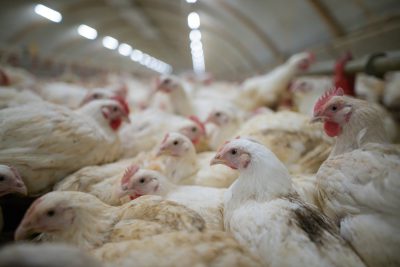When we look at the good reasons why governments around the world create legislation to ban something (not the dubious, self-serving reasons that also happen), it is usually because those things fall into one of three categories: they are banned because they cause harm to someone; because they cause harm to the planet; or because they are unjust or unfair. Farming animals falls into all three categories.
Tobacco is banned in Bhutan; fur farms are banned in Britain; plastic bags are banned in Morocco; and right across Europe, it is illegal to discriminate against people based on sex, race, colour, ethnic or social origin, religion, political opinion, disability, age or sexual orientation. These laws all make sense. They protect people, planet ,and animals – because animals are ‘someone’, too.
And yet, despite causing serious harm to animals, people and the environment, and being unjust and unfair to the world’s poorest and to marginalised communities in the United States and beyond, factory farming has not yet been banned anywhere in the world. Not anywhere.
What Are Factory Farms?
Factory farms are industrial facilities where animals are bred into existence, fattened for their meat or exploited for their milk or eggs, and then slaughtered. Their lives are characterized by intense confinement, their movements are severely limited, their natural behaviors, wants and needs all denied, and they experience nothing at all to make their lives worth living.
Ninety-nine percent of farmed animals in the United States are raised on factory farms.
What Are Ag-gag Laws?
The realities of modern farming are so shocking that when faced with the facts, the public reacts strongly, not just by voicing justifiable anger, but by changing their own habits and behaviors.
However, the animal farming industry, controlled and run by multinational corporations, was never going to sit back and allow such disruption to continue without a fight. It could have acknowledged the horrors that those investigations showed and pledged to change its ways, but of course it didn’t. Instead, it lobbied for ‘ag-gag’ bills to be introduced – laws aimed at silencing whistleblowers and burying the truth.
The details of ag-gag bills vary from state to state but they commonly make it illegal to photograph or film a factory farm without the owner’s permission and for an investigator to get work at a factory farm.
The first ag-gag law was introduced in Kansas around 30 years ago, although in January 2020, most of that law was struck down as it was found to be in violation of the First Amendment. Since Kansas led the disinformation charge, 28 states have attempted to pass ag-gag laws, nine have succeeded but only six still stand. The battle continues. At stake is our right to knowledge and to freely choose whether we want our dollar to fund the cruelties of factory farms.
Animals On Factory Farms
Billions of farmed animals around the world are confined in cages or crates so small they can barely move. Pigs, chickens, turkeys and calves are most routinely confined in this way, but fish are also victims of the factory farm system. Animals are crammed in, fed the bare minimum to keep them alive, every cent spent on them bartered down and accounted for, and ultimately, they are sent to their deaths when it’s time to cash in.
These are sentient beings with whom we share this planet. These are our brethren, our fellow travellers on life’s journey. But in today’s world of mass production and global trade, animals are treated as just another product to be traded, their lives worth only what will be paid for their butchered body parts.
The way we legally confine, beat, mutilate, forcibly impregnate, take their young, their eggs, their semen, and their milk, and then dispassionately take their lives, too, is something future generations will undoubtedly struggle to understand. They may also struggle to forgive.
Chickens
Two distinct types of chicken have been purpose-bred – one that puts on weight fast and so can be exploited and killed for their meat, and another that is able to produce a large number of eggs, despite being fed minimally.
The majority of hens reared for their eggs in the US are caged. Each hen has no more space than a single sheet of letter-sized paper. They cannot spread their wings, and nor can they dustbathe, nest, forage or scratch in the earth – all natural behaviors for these bright birds.
In those cages, which damage their feet, the birds are denied everything that makes life worthwhile. This is bad enough but there is so much more to their suffering than confinement. It is a common industry practice to starve the birds for up to 21 days – this is known as forced molting. This prolonged starvation causes the birds to lose weight, lose feathers, and stop laying eggs, but when they start laying again, it has been found that those eggs are larger, and therefore more profitable. Starving birds like this is undeniably cruel, and has been banned in many parts of the world, including India and Europe.
For birds reared for their flesh, a different set of cruelties awaits. They may not be caged but they spend their sad, short lives inside huge warehouses alongside tens of thousands of others. Because these birds have been bred to put on a lot of weight fast, their hearts, lungs and bones often cannot cope with the demands of a rapidly ballooning body. Heart attacks, and broken legs are commonplace. Those who cannot reach the feeders starve to death. When they are sent to slaughter, they are still babies – they have a chick’s blue eyes and they tweet like newly hatched birds. Typically, they are just 48 days old when they are killed.
Pigs
Research shows that pigs are as smart as chimpanzees. They can play video games, are great at solving mazes, and can comprehend symbolic language. People who meet them at sanctuaries are often surprised to see they wag their tails like dogs when they are happy.
On farms, it is a very different story. Sows are confined in gestation crates throughout their entire 16-week pregnancy. These metal cages with bare slatted floors are so small the animals may only stand or lay down, but can neither turn around nor take a step forward or back. Naturally, during pregnancy, pigs would walk for miles to find a safe space in which to build their nest but in the crates, there is nowhere to go and nothing to make a nest with. Desperately, they still try, going through the futile motions in order to give their young a safe place to be born.
Like most farmed animals, pigs endure routine mutilations including teeth clipping, tail docking and castration all without pain relief. They are not even afforded that one shred of compassion.
Cows
Just as two kinds of chicken have been bred, so have two kinds of cows: one that puts on a lot of muscle for beef, another that produces large quantities of milk.
Cows reared for their flesh are typically fattened on feedlots – large, barren outdoor pens, with some farms holding up to 85,000 animals at a time. There is nothing to do all day but stand and eat the food that is brought to them since these grazing animals are not even permitted to graze. Already they will have been subjected to mutilations like ear tagging, castration and branding, and all that remains for them is a long-distance, frightening trip to the slaughterhouse.
Cows used for milk do not just give it with a turn of a faucet. Like all mammals, they must first be pregnant, and they produce that milk to feed their calf, not to sweeten our coffee. Cows make excellent mothers, but from an industrial point of view, the calf is no more than an unwanted by-product. It’s the milk that’s valuable, not the baby and so, if he is male, his life may be taken on the day he is born. Or he may immediately be separated from his mother, confined and chained alone in a crate and fed a formula to keep his flesh pale for those who like the taste of veal.
Female calves may be forced to join the dairy herd, and their life will mirror their mothers’, right up until the end when, exhausted, lame and spent, they too are sent to slaughter.
Turkeys
Life for turkeys is much the same as for chickens. They are reared in huge industrial sheds where they remain standing on urine-soaked litter that burns their skin and can cause painful ulcers and lameness. The bird we know today as a turkey bears little resemblance to wild turkeys who forage on forest floors and can fly short distances at up to 50 miles per hour.
These poor, purpose-bred birds cannot fly, can barely stand and are unable to even reproduce naturally – all because they have been bred to have large breasts because that’s the meat that consumers want.
If you get the chance to meet rescued turkeys in a sanctuary, you may be surprised at how friendly they are. They can be very chatty, they love a cuddle and the males are likely to put on quite a feather display and strut about, just like a peacock, as they try to impress you.
Fish
For those who have switched to farmed fish in order to reduce pressure on wild species, a shock awaits. Research shows that farming these creatures does not help conserve their wild cousins because farmed fish eat fish, and where do you think they get them from? That’s right, the ocean.
Life for farmed fish is utterly miserable. These aquatic creatures belong in the oceans, where they can swim and school together, and where they add to the great biodiverse marine ecosystem. By contrast, farmed fish live in small, cramped, filthy pools or cages. In them, fish may suffer from a range of health problems including fin erosion, eye cataracts, skeletal deformities and sea lice infestation.
The European Food Safety Authority states that common aquaculture practices can lead to injury, stress and increased disease susceptibility, and that ‘the intensification of fish farming has inevitably resulted in the emergence of infectious diseases’.
Why is this a problem? Do fish even feel pain? Research concludes: yes, they do.
Why Is Factory Farming Bad For Animals?
We are animals too, and so it takes very little imagination to see why being crammed inside a filthy shed, in pain, in noxious air, unable to do anything that makes life meaningful while watching those around you get ill or injured and die, is an unpleasant life. Then there are the forced procedures: the artificial insemination, the mutilations, the being forced into cages or crates by being kicked, beaten or electrically goaded. And now imagine giving birth, only to watch as your young are taken away from you.
We all have wants, desires, and needs, but underneath it all the things that make life worthwhile are freedom from pain and suffering, a safe place to live and raise our young, and some autonomy over our lives. Animals in factory farms have none of this.
Extreme Confinement
Billions of farmed animals around the world are confined inside cages or crates so small they can barely move. For these animals, release from their debilitating confinement may come only on the day they are sent to slaughter. Some states have legislated to end the very worst of the suffering but factory farming – and the torment it inflicts – remains the norm. We cram animals in and we sell them cheap – as though they were cans of beans not sentient beings.
Cruelty To Chickens
Investigations consistently show a high level of suffering and deprivation on America’s chicken farms. A 2024 investigation by animal protection charity Animal Outlook found Foster Farms workers driving forklifts over chickens, throwing them, and kicking them. Another 2024 investigation, this time by Mercy for Animals showed birds kicked and thrown against the barns’ metal walls. Many were picked up by their legs, necks, or wings and roughly thrown several feet through the air into transport cages. This is not just America. Investigations all over the world – including the UK, Spain, Mexico, Brazil, India and Australia – show that there is no compassion in factory farming.
Pig Abuse
Investigations on pig farms consistently show the level of suffering these animals must endure. In 2019, a horror story from an Indiana pig farm hit the headlines. The video shared by PETA showed piglets dying, their mothers unable to reach them because they were trapped in crates. One deformed baby was left to die slowly next to his surviving siblings. Some of the mother pigs had huge open pressure sores from lying on the concrete floor. The investigation also revealed a worker cutting off piglets’ tails without any pain relief and throwing the animals several feet through the air. It showed a waste system, brimming with feces and urine. Rats, roaches, maggots, and other insects had free run of the dilapidated sheds, which were littered with the decomposing bodies, tails, and heads of dead piglets. It was described as “the stuff of nightmares”.
This is not an isolated case. This is how pigs typically live (and die) on intensive farms. You can see the same suffering on pig farms all over the world, including the UK, New Zealand, Italy and Canada.
No Compassion For Cows
In 2019, Animal Recovery Mission filmed calves on a dairy farm being kicked, dragged, and violently thrown to the ground by several of the company’s workers. While they were being tormented and abused, their desperate mothers were calling and calling to them until they became hoarse. Those who survived were put into calf hutches where the young, vulnerable animals struggled for breath as they succumbed to dehydration and malnutrition in temperatures that soared to 43C.
The investigator who got a job on the farm witnessed employees “punching, kicking, and stabbing cows, sometimes hitting their udders with the milking claws or shoving them with metal tubes and broomsticks. When cows in the milking line would not cooperate, frustrated employees would bend and break the cows’ tail bones as punishment. On a daily basis, cows with infected eyes, broken bleeding tails, infected udders and afterbirth placentas hanging out from their bodies were seen being forced on the rotary system.”
It was shocking, but it was not unique. Cows suffer on farms all over the world, as shown by investigations in Mexico, the UK, India, Australia, Canada and Italy.
Tormented Turkeys
Turkeys suffer the same miseries and abuse. One Mercy for Animals investigation found an ongoing culture of cruelty where farm workers kicked and stomped on birds, dragged them by their fragile wings and necks, and threw them onto the ground or on top of other birds. In the unit, birds suffered from serious untreated illnesses and injuries, including open sores, infections, and broken bones. Investigations have revealed that turkeys suffer exactly the same in other countries, too, including Canada, Spain, the UK and Australia.
Fish Suffer, Too
Undercover footage on a salmon farm in Maine shows disfigured salmon being scooped out of cramped tanks and tossed into plastic containers where they are left to slowly suffocate. Some of the salmon at the farm suffered from spinal deformities, and some had fungal growth eating away at their faces. Workers were filmed slamming and stomping on the fish. The Scottish salmon industry is no better and this shocking investigation was filmed in fish farms across Europe.
Factory Farming Regulations
Animals reared for their meat, milk and eggs are among the least protected animals in America. There are no federal laws to protect animals on farms, and the laws that exist to offer some protection during transportation and slaughter do not apply to chickens, turkeys, ducks, geese or any other poultry, and they don’t apply to fish. This means the vast majority of animals being transported and slaughtered have no federal protection at all. Those animals who are ‘protected’ can still be trucked for 28 hours at a time before being unloaded to rest, eat and drink. Even this meager law is weakened by loopholes, lack of enforcement and low fines for violations.
State laws are the only hope for any protection for animals on farms, but the majority of US states expressly exempt farmed animals or routine-but-cruel practices from their regulations. Even when laws do exist, they are rarely enforced. After all, who is going to report breaches unless an undercover investigator happens to go there?
How Are Factory Farmed Animals Killed?
All animals suffer during the slaughter process. The journey to the slaughterhouse is frightening and exhausting, and once there, they are driven through the unit, often by being hit with sticks or prodded with electric goads, while all around them is the clang of metal machinery, the stench of blood and the sounds of frightened animals.
Land animals are killed by being hung upside and having their throats cut. By law, they should be stunned first – though there are exemptions that allow millions of animals to go to the knife fully conscious – and stunning methods vary from species to species. Stunning is intended to render the animal unconscious before their throats are cut but all too often the stunning adds to the fear and suffering experienced. It’s clear that not stunning causes immense suffering but it is also clear that stunning causes immense suffering. The only solution is not to slaughter at all.
In slaughterhouses, cows are stunned with a ‘captive bolt gun’. This is a gun with a retractable bolt that is shot into the animal’s brain. If the power is strong enough, the bolt is positioned correctly and the animal does not move, the animal should be stunned quickly. In reality, they may be shot in the head multiple times before they lose consciousness and fall.
Sheep are usually stunned by applying electrified tongs around their heads and passing a current through their brains. If the placement is wrong, or the tongs are not applied in the correct way or for the correct duration, or if the frightened animal moves, he or she will suffer a huge electric shock but will not be rendered unconscious.
Pigs are also stunned using electrified tongs but in many countries they are more likely to be put into a cage and lowered into a gas-filled chamber. As they panic and hyperventilate, the animals breathe in the toxic fumes, convulsing due to the abrasive poison and suffocating through lack of oxygen.
Chickens and turkeys may be hung upside down by their legs and dragged through electrified water. Those who are small may miss the water; some may raise their heads and also miss it. These animals reach the neck cutter fully conscious. It is increasingly common for birds to be gassed.
Why Should Factory Farms Be Banned?
There are few industries in the world that cause as much damage as animal agriculture. It causes the decimation of forests, the pollution of land, waterways and earth, and the extinction of countless species. It seriously exacerbates climate breakdown from which we are already seeing record-breaking storms, raging forest fires, water shortages, coral bleaching, ocean dead zones, dangerous heat waves, rising waters, melting ice caps and devastating floods.
Surely, this alone is sufficient reason to stop farming animals.
With three out of four emerging diseases coming from animals, scientists are telling us that the next pandemic could very easily come from factory farms. We already know what a pandemic can do to our families, our communities and our economies.
Is that not enough reason to ban factory farming?
Animal farming causes illness and suffering in people who live near factory farms, and in those who work in them. Slaughtering animals causes additional suffering to people – it has been linked to a variety of disorders, including PTSD, PITS (perpetration-induced traumatic stress), and an increase in crime rates, including higher incidents of domestic abuse, as well as alcohol and drug abuse.
If we cared about our communities, wouldn’t we ban factory farming?
Conclusion
Factory farming is abhorrent. It’s bad for animals, people, and the planet. It threatens our health and the future of mankind. It’s not even good for the economy! The industry is propped up by our taxes, and then we have to pay all over again to clear up its mess. It costs us dearly.
So, should factory farming be banned? Yes, of course.
